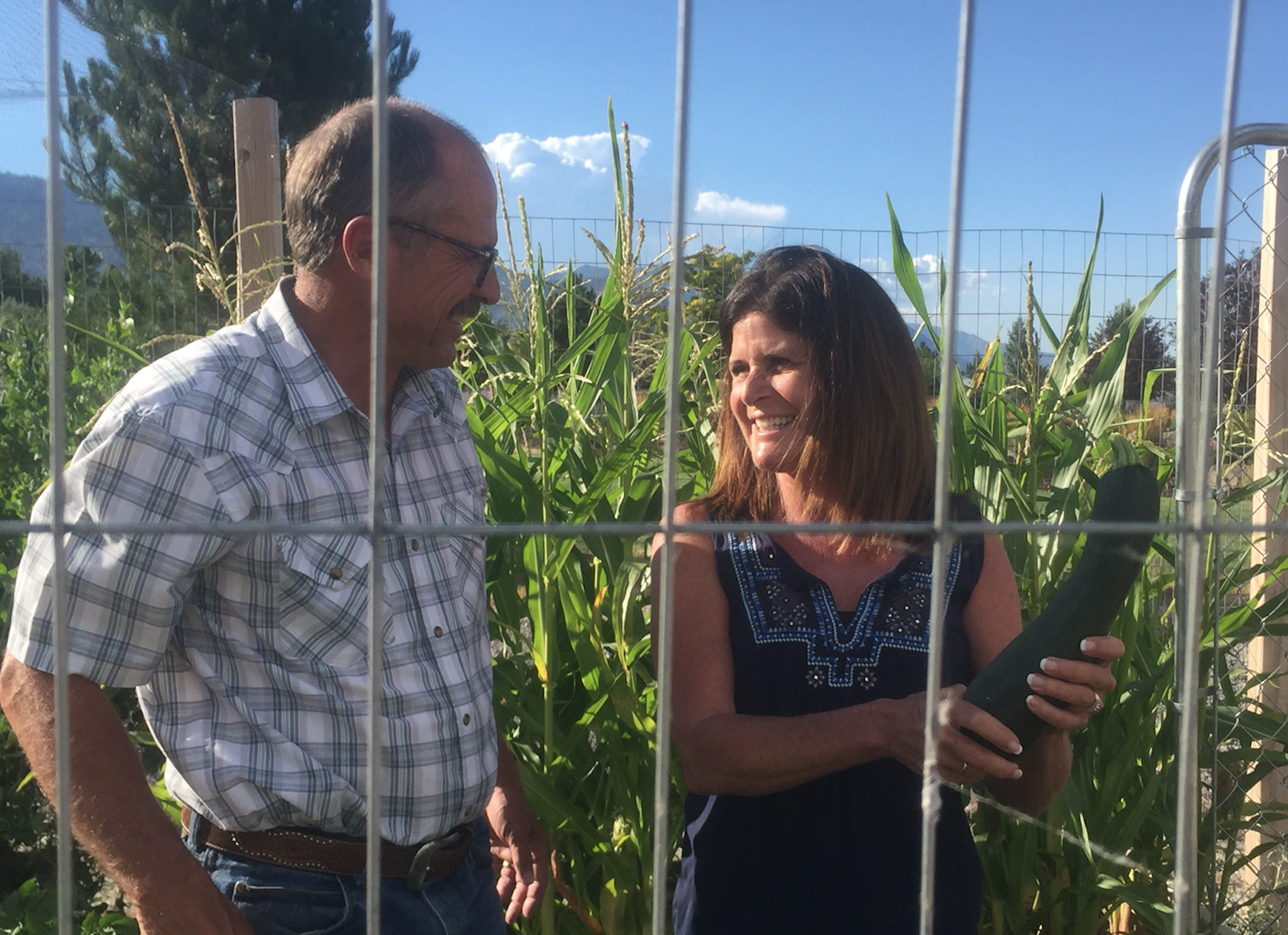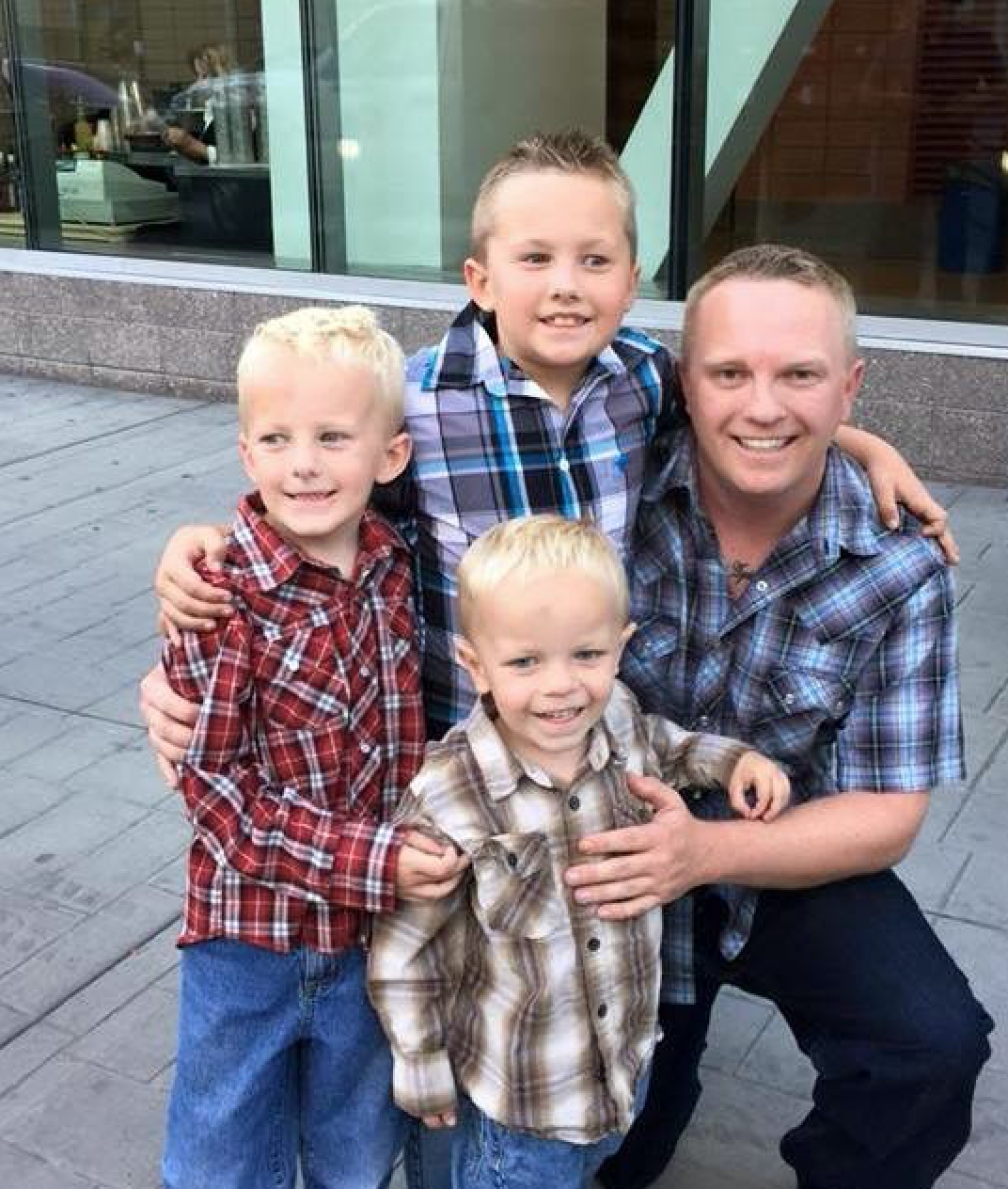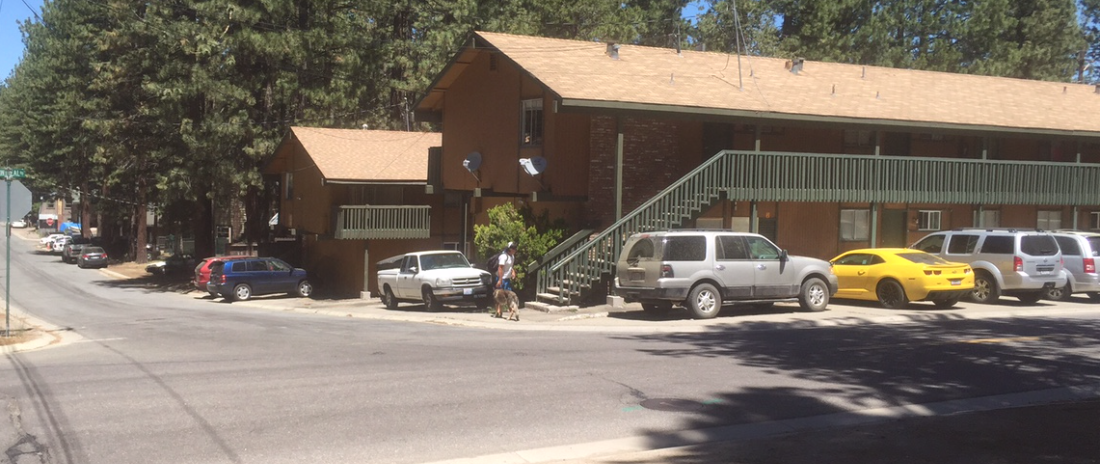All income levels impacted by Tahoe housing crunch; moving a little east often the answer
Publisher’s note: This is one in a series of stories about affordable housing in the Lake Tahoe-Truckee region. All articles may be accessed via the home page under Special Projects, 2017 Affordable Housing.
By Susan Wood
There’s something extraordinary going on in the Lake Tahoe housing market when “The Guy from Tahoe” isn’t.
Curtis Fong, who long has had a connection with Tahoe (hence the name), moved to Gardnerville 30 years ago – marking a trend that hasn’t slowed down. In the last few decades, he’s had company. Some former Tahoe residents have moved as far away as Dayton to make the dollar go further, among other reasons.
“Bottom line, it was a better value,” Fong said of his family’s move to the Ranchos. The popular Carson Valley neighborhood was also a better place to raise children, he added.
 “And when I look back 30 years ago in the days of ‘Deep Snow,’ there were drugs all over town, and most kids were latchkey kids,” Fong said of the 1989 undercover law enforcement operation that resulted in the arrest and conviction of then South Lake Tahoe Mayor Terry Trupp.
“And when I look back 30 years ago in the days of ‘Deep Snow,’ there were drugs all over town, and most kids were latchkey kids,” Fong said of the 1989 undercover law enforcement operation that resulted in the arrest and conviction of then South Lake Tahoe Mayor Terry Trupp.
In 1987, the average price for a home in Tahoe was about $140,000. At the time, a three-bedroom on one-third of an acre in Carson Valley was $75,000. Thirteen years ago, the appraised value was $200,000 for that same property. And through the last decade, the median for a comparable property in Lake Tahoe has still dwarfed the price in comparison to its high desert neighbor. The median in South Lake Tahoe runs $404,200. In Gardnerville, it’s $330,700 at $213 per square foot, while the Ranchos is a little higher at $233.
Granted, moving outside of a tourism hotbed, especially ski towns, is not a new phenomenon to the housing market. In Mammoth, workers live in Bishop. Vail employees commute in from the far reaches of Eagle County.
Fong, who is better known as an activity-based tourism guru and icon, believes he made the right choice for financial and quality of life reasons to “go off the hill,” as it’s called.
He empathizes with those seeking a home to buy at the lake or even to rent, with the latter climbing in price but falling in inventory.
“I feel for those people out there looking for a place to live,” he said.
Where does he see the trend of Tahoe going culturally?
“It’s interesting with the millennials. I kind of see a shift to young professionals moving in, but I guess time will tell,” Fong said of the age group 18-36.
His kids, Matthew and Erin, are now in their 30s as well, and he still spends a lot of work and play time in Tahoe. He even owns office space at the lake.

Living in the Carson Valley allows Bob and Tita Anderson to enjoy things they couldn’t at the lake — like having a prolific garden. Photo/Susan Wood
In good company
Fong is not alone in keeping limited ties with Lake Tahoe while living east of it. Some made the exodus decades ago like Fong. Others just ventured down recently. Either way, it’s a continuing trend that is worth noting.
South Lake Tahoe accountant Weldon Wulstein moved to Carson Valley four years ago. He lived in Tahoe Paradise neighboring Meyers five years ago, but the family needed space and the right zoning. His daughter was into horses.
They moved onto Foothill Road south of Genoa where Wulstein said the family likes “the quiet nature” of the community.
“It’s only 15 to 20 minutes away (from the Tahoe region), but it’s a completely different world,” he said. “And prices are rising down here too, but not as fast as the lake.
“It’s interesting to straddle two communities. You can’t be as spontaneous,” he said.
He also thought about moving his South Lake Tahoe offices to the Carson Valley, but decided against the idea.
“It’s too late to start over,” he told Lake Tahoe News.
Wulstein runs into people he knows from Tahoe in stores in Carson Valley.
“I think more and more people are moving here because of the affordability factor,” he said.
Just down the road from Wulstein are Bob and Tita Anderson, a couple who moved to the Carson Valley with similar circumstances after being at the lake 36 years.
The Andersons, who also have horses, sought a place three years ago that was ideal for their retirement – one that provided good bang for the buck while, like Wulstein, they kept their company operating in South Lake Tahoe. One difference from Wulstein – the Andersons added a satellite office in Gardnerville to run two sites. The financial endeavor tripled their business market.
Through the years, the Andersons have felt the pain from their employees seeking housing in Tahoe, with rentals averaging between $1,500 to $1,600 a month in some locales.
“The biggest factor is the inventory is so low,” he said, echoing what’s become a well-known trend in a region thought of as “poverty with a view.” There’s a price to have a piece of paradise.
“Quite simply, Tahoe is a great place for young people to have fun. We don’t need as much excitement,” Bob Anderson told Lake Tahoe News.
Nonetheless, the couple has no regrets about their life path but emphasize how paradise has taken on a different meaning.
For one thing, they get to look straight up the Sierra at the snow when it dumps at Lake Tahoe. Their lower elevation allows them to tend to a prolific garden full of beets, zucchini, lettuce, squash and other lush produce. Their horses have plenty of room out the gorgeous back yard to roam when they’re not seeking cookies by the fence. They’ve quasi adopted stray ducks that follow Bob Anderson around and stroll up to the relaxing deck that resembles a sanctuary. And the chickens are tame, happy and productive with eggs.
In other words, their home could be the setting of a tourism commercial for the good life in the West.
“We loved our years we lived up there, but we haven’t heard of too many people going back,” he said.

Rich Heffelfinger is able to provide more for his boys by living in Dayton. Photo/Susan Wood
Seeing the movement every day
Even the Sierra Nevada region’s real estate agents have experienced the migration – some personally and professionally.
A 37-year real estate agent, Jim Valentine of Re/Max came from the lake but now lives and works in the Carson Valley.
He’s seen the exodus up close and personal.
“A lot of people started coming down. The migration started in the ’80s. When things were getting pricey, the Gardnerville Ranchos were built,” Valentine said.
At first, it seemed the middle class wanted simple affordability, but then things changed in recent years.
“What we’re seeing now coming off the hill is more high-end people,” Valentine said. These residents are seeking a certain lifestyle, space and quiet time like the Wulsteins and Andersons. And like Fong, Valentine cites parents looking for a place for their children to thrive.
“People are looking to escape California,” he said.
And even though the topsy-turvy real estate market took a dive in 2009 to coincide with the recession, the rebound has allowed many homeowners to get the equity back in their properties.
“It was a bucket of tears at that time,” Valentine said of the industry. “But now we’re seeing levels we saw in 2003 and 2004, with the economy getting stronger.”
Valentine expects to see a huge growth spurt with major, innovative corporations such as Tesla and Apple moving into Northern Nevada.
“Talk about a tremendous amount of employees coming here in the next few years,” he said. The influx will drive the commercial market along with it, he anticipates.
“We’ll have more people with more demand for more things,” Valentine told Lake Tahoe News.
That same drive for affordable housing in the last 30 years will drive companies to supplement the need of an expanding workforce.
Take Rich Heffelfinger. The longtime Harrah’s Lake Tahoe concierge manager describes his life at the lake like the toast of the town.
He now works in a hardware store in Dayton where he lives with his family with different priorities. Now it’s all about spending quality time with his children and watching the sunset in the high desert.
Still, he reflects on those 11 years in Tahoe with fondness as a more charged, glamorous environment of perks and recognition. However, it was a tough road from professional success to personal success for the man who started his hospitality career as the “Voice of the M.S. Dixie” at age 18.
“I thought Tahoe was my home. I moved to Tahoe (in 1996) with the intention of setting up roots. I grew up in the Washington (D.C.) suburbs, so I know about setting up roots,” he said. “I found it quite unaffordable to live here (in Tahoe).”
Being in his 20s early on, buying a home wasn’t on his radar in 1997. He rented a cabin for $400 a month.
“I wish I would have been in the mindset, but I didn’t feel like it at that stage in my life,” Heffelfinger told Lake Tahoe News. Then, there’s the perplexing challenge of getting the capital together.
More than four years ago, Heffelfinger rented a duplex for $1,800 a month in the meadow behind Lakeside Casino. His mother-in-law lived downstairs.
He wanted more for his money, so he moved from Tahoe to the Carson Valley on a lease option, but that deal fell through.
“I didn’t mind the commute (to Harrah’s), and I was trying to follow a budget,” he said.
A year ago, he ended up in Dayton with his three boys and two dogs. It backs up to open space in Storey County where the wild horses often make appearances outside their $1,000 a month rental house.
In the meantime, Carson Valley rentals have gone up alongside Lake Tahoe’s. He was looking at rentals for $1,800 a month before deciding to migrate farther east.
It’s definitely a different lifestyle.
“I’ve learned the simple things – to appreciate nature, solitude and good friends,” he said.
The commute to Harrah’s was unfeasible from Dayton. He ended up getting laid off within the last year anyway. He took the downtime as a way of spending quality time with his boys.
“If there was a winter to be laid off, it was this last one,” Heffelfinger said. Staying put proved safer than struggling with an hour and a half commute under normal weather conditions.
“I’m learning to like Dayton, and we’re learning to live with less,” he said. The family eats in most of the time as a healthier and less expensive alternative to flitting around restaurants most nights in Tahoe.
The 38-year-old man is saving to buy a home and is “grateful for what we have,” he said of his change of heart.
“In Tahoe, it was tough trying to keep up with the Joneses. I felt like I had to be ‘on’ in tourism concierge. I love living the simpler life,” he said.

The apartment complex Randy Valiente lives in would be demolished if the loop road goes through. Photo/Susan Wood
Life loops around
Randy Valiente could be facing a similar life choice if the loop road project comes to fruition like the Tahoe Transportation District plans.
The project, which is undergoing an environmental review, calls for Highway 50 to be diverted through the Stateline area from Pioneer Trail around the 7-Eleven convenience store, connect with Montreal Road in front of the Van Sickle Bi-state Park and hook up with Lake Parkway as it weaves back to its main channel on the east side of MontBleu.
The controversial proposal is intended to make the casino corridor into a pedestrian hub. But there’s more to it than that.
Part of the deal calls for a denser replacement of units to make up for the modest, to-be-demolished checkerboard houses, cabins and apartments now located on those “shortcut” streets such as Moss, Fern, Chonokis and Primrose avenues. In an ambitious government maneuver, a land swap is required to move the highway to become city property. The California Department of Transportation would take over the new highway and put greenbelts alongside it.
Valiente’s apartment at 3734 Primrose is right in the path – within a block east of Moss Avenue, straight up from the 7-Eleven.
The food and beverage worker now walks to his job at Harrah’s and wonders what will happen if the project goes through in the coming years.
The Stateline renter shared that he had no knowledge of the project since the landlord has not discussed the subject with him.
He is open to suggestions in moving from his two-bedroom apartment he rents for $850 a month.
“For us, if they give us a place to stay, then fine. That’s a problem living around Tahoe. It’s quite hard,” he told Lake Tahoe News, while sitting outside his place.
Motorists whizzed by on this popular shortcut used to circumvent traffic backups on Highway 50 in the casino corridor.
That’s precisely what Tahoe Transportation District Director Carl Hasty expects to hear and wants to answer.
“Housing is important. That’s how I look at it. It doesn’t solve all our housing issues, but it takes care of much of it,” Hasty told Lake Tahoe News during a stroll through the affected area. “This is a way of getting density housing in.”
The plan is for 76 residential units to be built, with “no net loss” of housing. Still, displacement is a hard sell anytime residents are relocated in the name of what proponents call progress. And with Hasty’s long planning tenure in Tahoe including as a high-ranking authority at the Tahoe Regional Planning Agency, he may know better than anyone.
A relocation assistance analysis study was conducted in respect to the loop road.
“Acquisition and relocation are the most expensive part of the process,” he said. Fair market value will be the order of the day.
But of course it comes with the territory as South Lake Tahoe knows. Redevelopment in Stateline was never easy but turned out to be a financial boon in tax dollars if one forgives a few hiccups along the way associated with albatross amenities such as the parking garage at Heavenly Village.
But what’s the alternative to moving ahead?
“There are multiple reasons (for) and benefits to this. If there’s no project, it’s a lost opportunity,” Hasty told Lake Tahoe News. “It would accelerate the city’s local area plan objective.”
The city has special districts at Ski Run Boulevard, the Y referred to as Tahoe Valley, and Harrison Avenue.
On one recent summer morning, Hasty paused a long time at the corner of Moss and Pioneer to imagine the prospects of what could be developed at an open lot there.
“The question becomes what happens here. This is the gateway. There are endless creative opportunities,” he said, while pondering the future. “It’s time to build for the next 75 years.”


